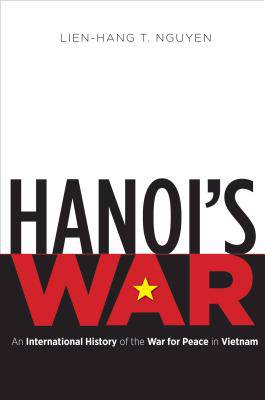
- Afhalen na 1 uur in een winkel met voorraad
- Gratis thuislevering in België vanaf € 30
- Ruim aanbod met 7 miljoen producten
- Afhalen na 1 uur in een winkel met voorraad
- Gratis thuislevering in België vanaf € 30
- Ruim aanbod met 7 miljoen producten
Omschrijving
While most historians of the Vietnam War focus on the origins of U.S. involvement and the Americanization of the conflict, Lien-Hang T. Nguyen examines the international context in which North Vietnamese leaders pursued the war and American intervention ended. This riveting narrative takes the reader from the marshy swamps of the Mekong Delta to the bomb-saturated Red River Delta, from the corridors of power in Hanoi and Saigon to the Nixon White House, and from the peace negotiations in Paris to high-level meetings in Beijing and Moscow, all to reveal that peace never had a chance in Vietnam.
Hanoi's War renders transparent the internal workings of America's most elusive enemy during the Cold War and shows that the war fought during the peace negotiations was bloodier and much more wide ranging than it had been previously. Using never-before-seen archival materials from the Vietnam Ministry of Foreign Affairs, as well as materials from other archives around the world, Nguyen explores the politics of war-making and peace-making not only from the North Vietnamese perspective but also from that of South Vietnam, the Soviet Union, China, and the United States, presenting a uniquely international portrait.
Specificaties
Betrokkenen
- Auteur(s):
- Uitgeverij:
Inhoud
- Aantal bladzijden:
- 462
- Taal:
- Engels
- Reeks:
Eigenschappen
- Productcode (EAN):
- 9781469628356
- Verschijningsdatum:
- 1/02/2016
- Uitvoering:
- Paperback
- Formaat:
- Trade paperback (VS)
- Afmetingen:
- 158 mm x 236 mm
- Gewicht:
- 662 g

Alleen bij Standaard Boekhandel
Beoordelingen
We publiceren alleen reviews die voldoen aan de voorwaarden voor reviews. Bekijk onze voorwaarden voor reviews.








